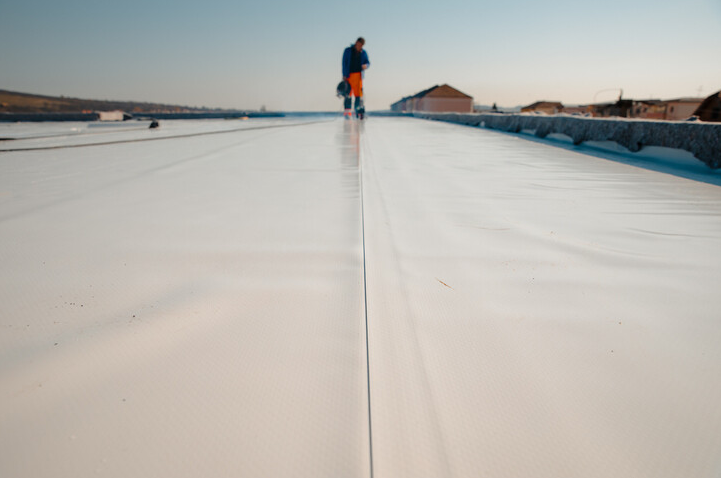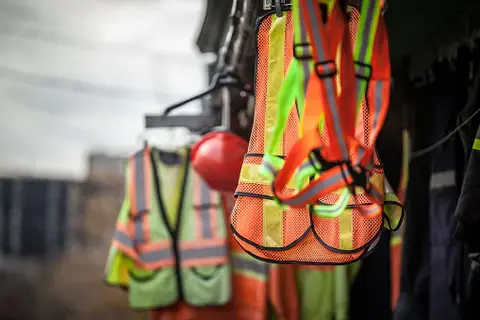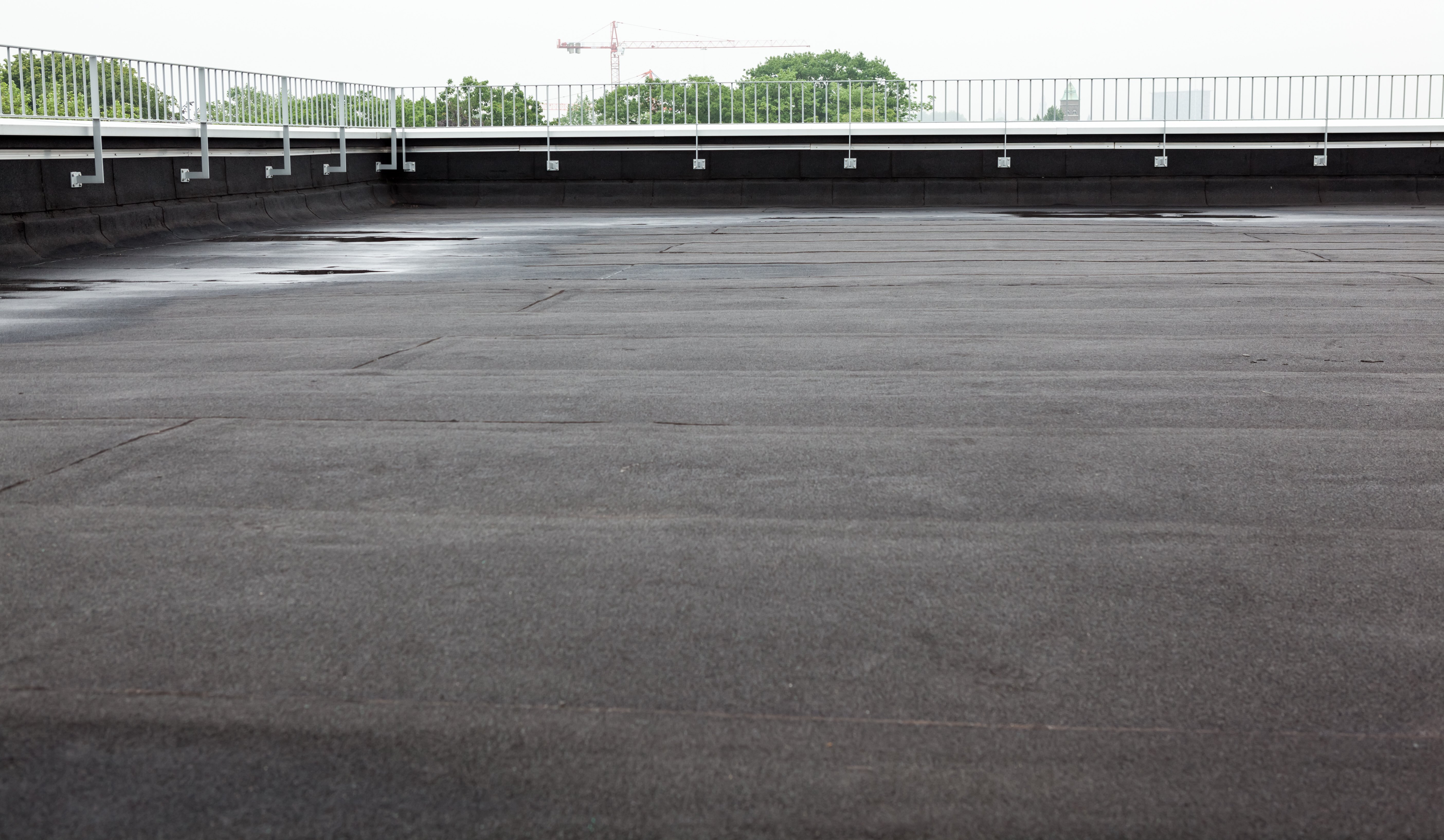Mastering Commercial Flat Roofing: Spot and Stop the Common Problems
When it comes to commercial flat roofing, property managers know that staying ahead of common issues is key to avoiding costly repairs and replacements. From pooling water to membrane tears, flashing failures, and blocked drainage, the challenges are numerous. In this blog post, we will explore how to spot these problems early on and take proactive measures to address them effectively.
The Perils of Pooling Water
Pooling water atop your commercial flat roof isn't just a nuisance—it's a harbinger of potentially serious structural issues. Ignoring this symptom can swiftly escalate into a cascade of detrimental effects, including leaks that compromise your building's interior and the dreaded onset of mold growth. The key to thwarting these problems lies in vigilant observation and timely action.
Regularly survey your roof for any signs of water accumulation. This practice isn't just about spotting the obvious puddles; it's about understanding the subtle cues that indicate poor drainage or the initial stages of pooling. Such vigilance allows you to take preemptive steps towards enhancing drainage and averting the accumulation of water. Whether it's the adjustment of the existing drainage system, the addition of more drains, or simply ensuring that the current ones are free of obstructions, the goal is to ensure water finds its way off the roof efficiently and effectively.
Remember, water's persistence is not to be underestimated. It seeks out the path of least resistance, exploiting any vulnerability in your roofing membrane and creating an entry point for damage. The implications extend beyond immediate repairs; they can affect the long-term viability of your roofing system and, by extension, the integrity of the building itself.
By making roof inspections a routine part of your property management strategy, you can identify and rectify the early indicators of pooling water. This proactive approach not only protects your investment but also upholds the safety and comfort of the building's occupants. Staying ahead of water accumulation is more than a maintenance task; it's a critical component of effective property management.
Unraveling the Mystery of Membrane Tears
Membrane tears, though less conspicuous than pooling water or blocked drainage, are a formidable adversary in the realm of commercial flat roofing. These insidious breaches in your roof’s armor not only compromise its structural integrity but also pave the way for water ingress, potentially unleashing a host of interior damage within your building. The challenge with membrane tears lies not just in their detection but in understanding their underlying causes—be it weather extremities, foot traffic, or the inevitable wear and tear that comes with time.
Detecting these tears demands a keen eye and a systematic approach during roof inspections. It involves more than a cursory glance; it requires property managers to actively search for signs of distress in the roofing membrane. This could range from visible splits or cracks to more subtle signs like discolored or warped areas, which may indicate an underlying tear.
Addressing membrane tears promptly is paramount. Left unchecked, they can grow, further compromising the roof's integrity and leading to extensive and expensive repairs. The repair process often involves patching the tear or, in more severe cases, replacing entire sections of the membrane. Such measures not only restore the roof's protective capabilities but also extend its service life.
In the battle against membrane tears, knowledge, and vigilance are your best allies. By understanding the threat these tears pose and incorporating their detection into your regular inspection routine, you can significantly mitigate their impact on your commercial flat roofing system.
Flashing Failures: A Silent Threat
In the realm of commercial flat roofing, flashing failures stealthily undermine the structural integrity of the roof without heralding their presence loudly. This component, though often overshadowed by more conspicuous issues, plays a pivotal role in sealing the perimeters and junctions on the roof – areas where materials join and are most vulnerable to water ingress. Over time, weather fluctuations, from blistering sun to icy temperatures, can cause flashing to deteriorate, crack, or become dislodged, leaving the roof susceptible to leaks.
Regular inspections can unearth the early signs of flashing failure. These signs include visible gaps, rust on metal flashing, or bits of flashing material found on the ground after a storm. Unlike pooling water or membrane tears, the subtlety of flashing deterioration requires a more focused examination. This is where a detailed assessment around roof protrusions, such as vents and skylights, becomes indispensable.
Mitigating flashing failures demands immediate attention. At the first hint of compromise, swift action is necessary to repair or replace the affected flashing. This isn't merely about patching a potential leak source; it's about reinstating the roof's comprehensive defense against water penetration.
Through consistent monitoring and maintenance, the silent threat posed by flashing failures can be effectively countered. Ensuring the longevity and reliability of your commercial flat roof hinges on acknowledging and addressing even the most silent of threats with the urgency and seriousness they deserve.
Blocked Drainage: The Road to Ruin
Navigating the issue of blocked drainage on a commercial flat roof can be likened to steering clear of an iceberg at sea; what seems like a minor nuisance at the surface can spell disaster beneath. The anatomy of this problem is simple yet profoundly impactful. Leaves, debris, and even the occasional stray ball can transform a functional drainage system into an impromptu dam, holding water hostage on your roof. This stagnation is more than an inconvenience—it's a direct threat to the structural integrity of your building.
The insidious nature of blocked drainage lies in its capacity to silently exacerbate other roofing issues. Water, in its relentless quest for passage, intensifies pressure on every part of the roof, testing the limits of membrane resilience and flashing fortitude. This pressure cooker scenario can accelerate wear and exacerbate vulnerabilities, pushing your roofing system towards premature failure.
Tackling this challenge requires a blend of foresight and diligence. Incorporate into your maintenance routine a thorough check of downspouts, gutters, and internal drainage paths. These checkpoints are critical in intercepting problems before they morph into crises. Equally important is fostering an environment that minimizes debris accumulation. This might involve trimming overhanging branches or installing guards to keep drains clear.
In essence, maintaining clear pathways for water egress is not merely about avoiding the inconvenience of puddles or the unsightliness of standing water. It's a strategic defense against the cascade of issues that can arise from neglected drainage. Addressing blocked drainage is an investment in the longevity of your commercial flat roof, ensuring it continues to protect and serve its fundamental purpose without interruption.
Conducting Effective Regular Inspections
Embracing the role of a vigilant guardian over your commercial flat roof requires a disciplined approach to regular inspections. This is not just a cursory overview but a detailed examination designed to preemptively identify any red flags that could signal the onset of more significant problems. Engaging in this practice with a methodical and informed mindset is essential for catching the early signs of issues like pooling water, membrane vulnerabilities, flashing complications, and drainage blockages.
To conduct these inspections most effectively, it’s crucial to equip yourself with a checklist that covers all critical aspects of your roofing system. This list should guide you through a comprehensive evaluation of the roof's surface, paying close attention to common trouble spots and any signs of wear or damage. Integrating photographic documentation into your routine can also be incredibly beneficial, offering a visual history of the roof’s condition over time and helping to track changes or developments.
The timing of these inspections is equally important. They should be scheduled after significant weather events, which are often the culprits behind sudden damage, as well as on a bi-annual basis to align with the changing seasons. These strategic timings allow for the identification and rectification of any emergent issues before they escalate.
By committing to regular, thorough inspections, you proactively fortify your commercial flat roof against the elements and time, ensuring its continued performance and longevity. This ongoing vigilance is not just about maintenance—it's about sustaining the safety, efficiency, and resilience of your property.
When to Seek Professional Assessments
Navigating the complexities of commercial flat roofing requires a blend of diligence and expertise, especially when faced with issues that transcend routine maintenance capabilities. Identifying the precise moment to transition from in-house inspections to professional intervention is crucial. Certain situations demand the nuanced skills and tools only specialists possess, particularly when dealing with extensive damage or the need for comprehensive evaluations. This is not merely about acknowledging limitations but about leveraging expert analysis to safeguard the integrity and longevity of your roofing system. Professionals bring a depth of knowledge and diagnostic equipment that can unearth hidden problems, ensuring that solutions are both effective and enduring. Engaging with seasoned experts not only offers peace of mind but also constitutes a strategic move to maintain the roof’s structural integrity and operational efficiency. This proactive partnership between property managers and roofing professionals underscores a commitment to excellence, prioritizing the well-being of the property and those it serves.
Posts by Tag
Recent Posts
Popular Posts
Selecting the appropriate roofing system is...
The decision to embark on a commercial flat roof...
Recent Posts
Ensuring that your roof meets current standards...
As property managers, the last thing we want to...







